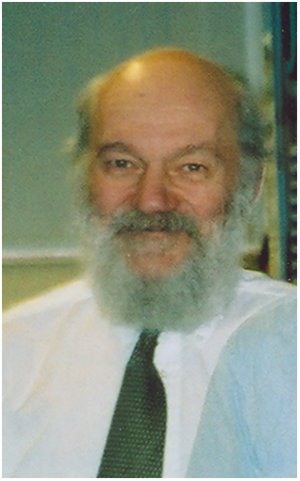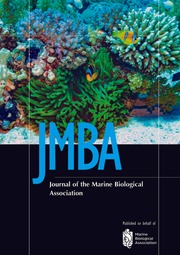The passing of Professor John Raven FRS in 2024, aged 82 years left a substantial void in the work and lives of many biologists worldwide. John’s contributions to the fields of plant and algal biology were monumental. John obtained his PhD in Cambridge, studying ionic relations of the giant alga Hydrodictyon africanum, supervised by Enid MacRobbie. After a short period as a postdoc and demonstrator in Cambridge he moved to Dundee where he spent the rest of his academic career, frequently interspersed by many working visits to other laboratories around the world. John never actually retired and continued to publish actively until his last days.
John’s research interests and knowledge were exceptionally broad and deep. His encyclopedic command of the scientific literature is legendary. Many a young scientist assumed that there must be more than one John Raven since he published on an incredibly wide range of topics. These ranged from cellular ion homeostasis in plants and algae to evolution, global ecological change, and space biology. It is impossible to summarize adequately John’s enormous contributions to marine science. Of more than 500 ISI-listed publications with John as an author, at least 300 relate to marine, algae, phytoplankton, or CO2.
A short list illustrates the wide range of areas to which John made substantial contributions. These include: inorganic carbon acquisition mechanisms in phytoplankton, cyanobacteria, macroalgae, and seagrasses (not to forget his landmark textbook Aquatic Photosynthesis, written with Paul Falkowski); the impact of high CO2 on phytoplankton physiology and ecology; photosynthesis at depth in the ocean; nutrient acquisition mechanisms and implications ranging from cellular homeostasis to biogeographical distributions and dynamics; phytoplankton biology in oxygen minimum zones; mitigation of increasing CO2 through carbon sequestration; phytoplankton evolution; sinking and bouyancy mechanisms; membrane transport and energization; harmful algal blooms and biotic interactions; the role of mixotrophy in phytoplankton nutrition and ecology; impacts of photosynthesis on modern and paleo climates; biofuel production. By all metrics he was an exceptionally highly cited scientist.
Most scientists who knew John could recount anecdotes that illustrate his superhuman academic stamina. One such anecdote refers to a meeting of the Society for Experimental Biology (SEB) in York. John was considering in the bar after dinner whether it was actually worth going to bed since he had to catch a 05.30 am train the next morning to chair a meeting at the Royal Society in London at 10.00 am. This turned out to be one of the first meetings to bring together the ocean acidification community in the UK and the resulting policy document ‘Ocean Acidification due to Increasing Atmospheric Carbon Dioxide’ published in 2005 was instrumental in bringing the potential ecological consequences of unmitigated CO2 production to the attention of scientists and beyond.
My own first encounter with John was as a PhD student, nervously giving my first talk at an SEB meeting in Newcastle on ion fluxes and phytochrome in plants. John, sitting next to Enid MacRobbie, asked the first question and I struggled to give a good answer. A few days later my supervisor and I received a three-page hand-written letter that detailed the rationale for his thinking and provided me with new insights that proved instrumental in the completion of my PhD work. Like all who knew John, I gained exceptional advice and encouragement during many subsequent meetings and encounters. Research discussions with John rarely left a stone unturned. A brief discussion at a meeting would more often than not result in a post card or email from John with further comments, suggestions and literature citations. It was always easy to spot whether a manuscript had been reviewed for publication by John since his comments invariably included a list of further literature that could be cited to strengthen the arguments!
John was invited to join the governing Council of the Marine Biological Association in 2000, succeeding Professor Enid Macrobbie in providing expertise in plant and algal biology. John served as a trustee member of Council for more than 20 years though his involvement with MBA science goes back substantially further through formal and informal collaborations. John also served as an Associate Editor of the JMBA from 1998. He was an untiring member of Council, rarely missing a meeting either in London or Plymouth. One of the great features of these meetings is that MBA research staff have the privilege of meeting Council members for lengthy one-to-one discussions about their work. My own research has benefitted hugely from such in-depth discussions with John. In particular, his insights into coccolithophore carbon acquisition mechanisms and his analytical thinking about how coccolithophores can bring inorganic carbon and calcium together in an intracellular vesicle to build their intricate calcite coccoliths were instrumental in steering my own research directions. Undoubtedly, many scientists worldwide would be able to make similar statements. It is clear that John was happy to serve on the Council of the MBA because of the opportunities for engagement in the ongoing science there. The sometimes slightly tedious periods during MBA Council meetings were often lightened by a note discretely passed from John containing an equation or scientific insight that he had clearly been thinking about during the meeting.
John received many academic accolades. He was elected a Fellow of the Royal Society of Edinburgh and Fellow of the Royal Society of London, awarded Doctor of Philosophy honoris causa by the University of Umeå. He received the award of Excellence from the Phycological Society of America and was an Honorary Life Member of the British Phycological Society and Corresponding Member of the Botanical Society of America (2009). He held an Adjunct Professorship at the University of Western Australia, and a Visiting Professorship at the University of Technology Sydney.
In addition to his tireless devotion and exceptionally prolific, high impact published outputs, John was famous for his good humor, remarkably sharp wit and often unconventional dress sense. While he often appeared to be ‘resting’ in the audience during conference talks this was highly deceptive since he would always be ready to ask probing and helpful questions at the end. It is no exaggeration to say that John fundamentally shaped the progress of biological science in many areas. His legacy will continue for many, many years.


